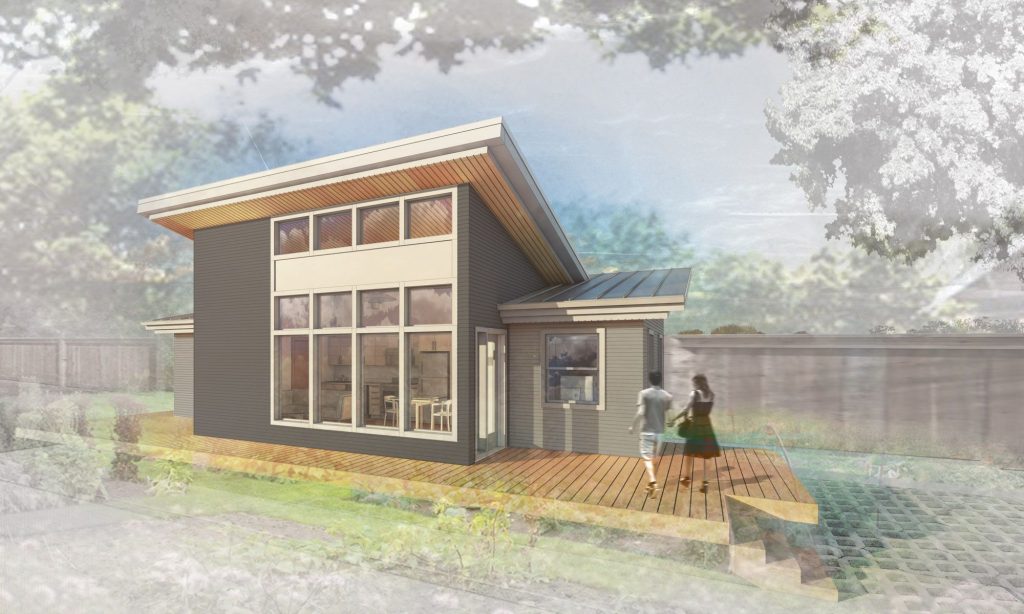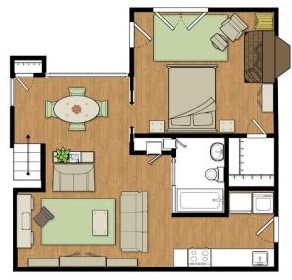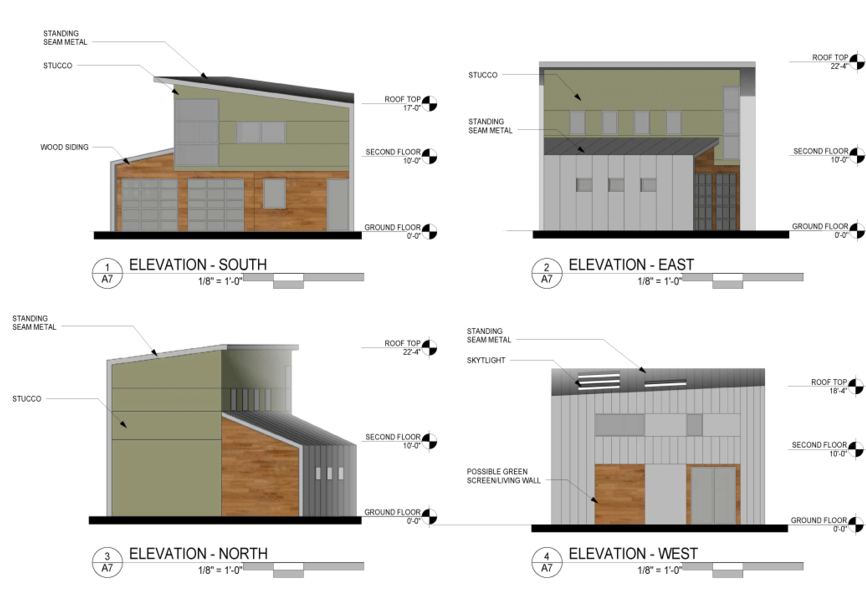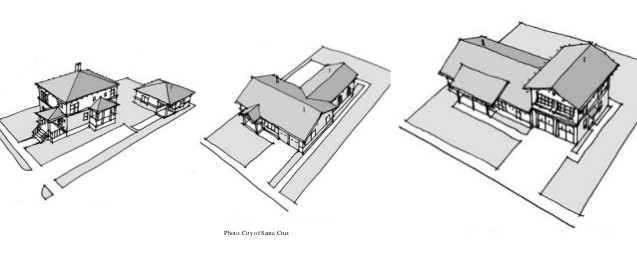An Accessory Dwelling Unit (ADU) is a residential unit that can be added to a lot with an existing single-family home. ADUs can be detached (a separate building in a backyard), attached to or part of the primary residence, or a garage conversion. ADUs are independent rental units that have their own kitchens, bathrooms, living areas, and entrances.
ADU can provide additional space for caregivers, grown children, elderly parents, or renters. Because ADUs are rental units, they produce additional household income. “Empty-nesters” can stay in their neighborhoods by moving into a smaller ADU and renting their larger existing home to pay the mortgage. An ADU can be built to house a relative or caregiver. There are many reasons for building an ADU on your lot.
The new state law (AB 2299, effective January 2017) applies to LA and makes it easier to build an ADU on a single-family lot. The state law encourages the construction of accessory units because the City needs more housing.

TYPES OF ADU’s
- Detached Unit to the Lot with an Existing Garage.
You can build up to 1200 sq. ft. with 5 ft minimum from the side and rear property lines and 10 ft. minimum between main house and ADU. - Attached Unit as an addition to the House.
No more than 50% of the existing house and max of 1200 sq. ft. also it needs to have side and rear setbacks. - Convert the Backyard Garage
You can build up to 1200 sq. ft. without changing the existing setbacks. - Attached Unit to the Backyard Garage
Maximum of 1200 sq. ft. with a minimum of 5 ft. from the side and rear property lines. 10 ft. minimum between main house and ADU.

Eligibility
Every neighborhood in Los Angeles falls under specific zones. To build an ADU, the current house must be located in a residential zone, and most likely in a single-family residential zone. ADUs are permitted in all single-family zones. Any lot in these zones, regardless of its size, can add an ADU if it will fit. Your lot must have an existing house, only one ADU per lot is permitted, and the ADU cannot be sold separately from the house. An ADU design must meet additional site requirements as well as building construction.
Parking
Many lots already accommodate two parking spaces in a garage or carport. When you add an ADU, you may need to fit one extra parking space on your lot. If additional space is required, space may be covered or uncovered.
You may not need additional parking if:
- ADU is located more than one-half mile of public transit.
- ADU is located within an architecturally and historically significant district.
- ADU is part of the existing primary residence or an existing accessory structure.
- On-street parking permits are required, but not offered to the occupant of the ADU.
- There is a car-share vehicle located within one block of the ADU.
These are the five current parking exemptions as of July 2017, but parking requirements may change.
Exemptions
The lot may not need additional parking for the ADU, leaving room for open space, a patio, a bigger ADU, etc. If the lot is located within one-half mile of transit (defined as one-half mile from any bus stop or rail station), it should meet the parking exemption.





